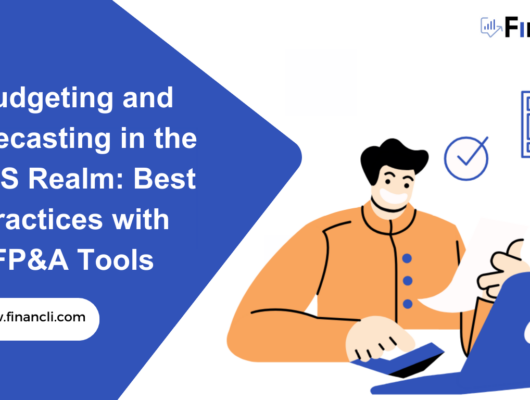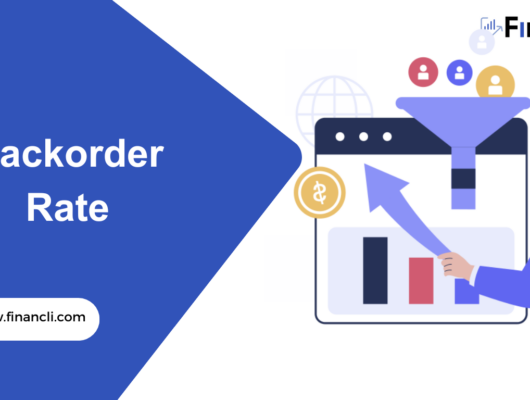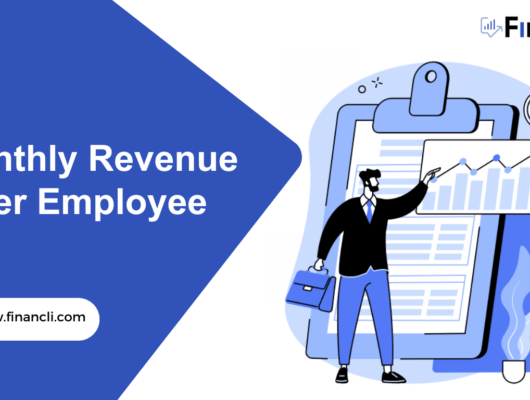Integrating FP&A Software into a SaaS Business Model
In the rapidly evolving world of software, the Software as a Service (SaaS) model has emerged as a dominant force, redefining how businesses operate and deliver value to customers. As these businesses scale and adapt to ever-changing market demands, the role of robust financial planning and analysis (FP&A) becomes increasingly critical. Integrating FP&A software into a SaaS business model isn’t just a matter of convenience; it’s a strategic imperative that drives informed decision-making, fosters sustainable growth, and maintains a competitive edge.
This article delves into the unique financial dynamics of the SaaS model, explores the transformative benefits of FP&A software, and provides a comprehensive guide to navigating the challenges and maximizing the potential of this powerful integration. Whether you’re a finance leader, a business strategist, or an aspiring entrepreneur, understanding the synergy between FP&A software and the SaaS business model is key to unlocking new levels of efficiency, insight, and success.
SaaS Business Model
The SaaS business model revolutionizes software delivery, offering applications via the Internet. It allows users to access software remotely, ensuring flexibility and scalability. However, this model demands robust financial planning and analysis (FP&A) to navigate its unique challenges and opportunities.
Understanding the SaaS Financial Model

Revenue Recognition in SaaS
In the SaaS world, revenue recognition unfolds over the subscription period, aligning income with the service delivery timeline. This method reflects the business’s performance more accurately and aids in making informed strategic decisions. It’s not just about when the cash is received but about recognizing revenue as the service is provided, ensuring that financial statements accurately reflect the company’s earnings and obligations.
Recurring Revenue Metrics (MRR, ARR)
Monthly Recurring Revenue (MRR) and Annual Recurring Revenue (ARR) are the lifeblood of any SaaS business. These metrics provide a predictable and consistent stream of income, vital for maintaining financial health and planning future growth. MRR offers a near-term view, while ARR extends the horizon, giving a broader perspective on long-term financial stability and performance.
Customer Acquisition Costs (CAC) and Lifetime Value (LTV)
Balancing the cost of acquiring potential customers (CAC) against the revenue they generate over time (LTV) is fundamental in SaaS. A healthy LTV to CAC ratio indicates that you’re spending the right amount to acquire customers and that those customers are valuable over time. This balance is crucial for maintaining a positive cash flow and, consequently, ensuring the company’s long-term viability.
Churn Rate and Its Implications
Churn rate, the percentage of customers who stop using your service over a given period, is a critical metric in the SaaS industry. It’s a direct indicator of customer satisfaction and product fit. A high churn rate can erode the customer base and significantly impact the revenue forecast, making it harder to achieve company goals. Understanding and minimizing churn through improved customer retention strategies is essential for sustaining growth and profitability.
The Need for FP&A in a SaaS Environment
In the dynamic and competitive landscape of SaaS businesses, the role of Financial Planning & Analysis (FP&A) extends beyond traditional boundaries. Here, finance teams are not just record-keepers or number-crunchers; instead, they are strategic navigators, guiding the company through the complexities of recurring revenue streams, customer retention strategies, and rapid market changes. The need for FP&A in such an environment stems from several critical factors:
1. Dynamic Revenue Models:
Unlike traditional business models, SaaS companies rely on subscription-based revenue streams. This model necessitates a deeper understanding and constant monitoring of metrics like Monthly Recurring Revenue (MRR), Annual Recurring Revenue (ARR), churn rate, and Customer Lifetime Value (CLV). FP&A helps in analyzing these metrics, providing insights into the financial health and growth trajectory of the business.
2. Customer-Centric Strategies:
In a SaaS environment, customer acquisition and retention are paramount. FP&A plays a crucial role in calculating Customer Acquisition Costs (CAC) and managing the delicate balance between spending on customer acquisition and the expected lifetime value of customers. This balance is vital for ensuring sustainable growth and profitability.
3. Rapid Market Evolution:
SaaS markets are known for their rapid evolution and high competitiveness. FP&A provides the agility needed to adapt to market changes, helping companies pivot strategies, optimize resource allocation, and maintain a competitive edge. Through scenario analysis and forecasting, FP&A enables businesses to anticipate future trends and prepare accordingly.
4. Cash Flow Management:
Managing cash flow is particularly challenging in a SaaS business due to the timing of revenue recognition and the need for upfront investment in customer acquisition. FP&A helps in forecasting cash flow, ensuring that the company can sustain its operations, invest in growth, and navigate through periods of financial uncertainty.
5. Strategic Decision Making:
FP&A provides the data-driven insights needed for strategic decision-making. By analyzing financial data, market trends, and business metrics, FP&A helps leaders make informed decisions about product development, market expansion, pricing strategies, and other critical aspects of the business.
6. Scalability Concerns:
As SaaS companies grow, they face scalability challenges. FP&A supports this growth by providing frameworks for budgeting, forecasting, and resource allocation that adapt to the company’s evolving needs. It ensures that financial strategies are scalable and aligned with the overall business objectives.
In essence, FP&A is not just beneficial but essential in a SaaS environment. It equips finance teams with the tools, insights, and agility needed to navigate the complexities of the SaaS business model, drive strategic decision-making, and propel the company toward sustained growth and success. By integrating robust FP&A practices, SaaS companies can better manage their unique financial dynamics, capitalize on opportunities, and overcome the challenges inherent in the fast-paced world of software services.
Benefits of Integrating FP&A Software in SaaS

Enhanced Forecasting Accuracy
Accurate forecasting is crucial in the fluid SaaS market. FP&A software enhances cash flow prediction, enabling agile, informed decisions by anticipating market changes and impacting financial outcomes.
Real-Time Financial Insights
In the fast-paced SaaS world, finance leaders need immediate access to financial data to make informed decisions. FP&A software provides a single source of truth, offering real-time insights into financial performance. This immediacy helps businesses respond quickly to opportunities or threats, ensuring agility and competitiveness.
Improved Decision-Making Capabilities
Data-driven insights empower business leaders to make strategic decisions that align with the overall business strategy and objectives. FP&A software provides the analytical tools necessary for understanding complex financial scenarios, helping leaders choose the best path forward for growth and profitability.
Scalability and Flexibility
As SaaS businesses grow, their financial needs become more complex. FP&A software offers the scalability and flexibility needed to accommodate this growth. Whether it’s expanding into new markets, adding new services, or scaling up operations, FP&A software adapts to the changing needs, ensuring that financial planning and analysis continue to support the business effectively.
Key Features of FP&A Software for SaaS
Budgeting and Forecasting
These tools are essential for creating accurate budgets and forecasts, reducing budget variance, and planning for future scenarios. They allow SaaS businesses to allocate resources efficiently, plan for growth, and anticipate financial needs.
Financial Reporting and Dashboards
Dashboards provide a visual representation of financial statements and other key metrics, offering actionable insights into financial performance. They help finance teams and business leaders quickly understand the financial health of the company and make informed decisions.
Scenario Planning and Analysis
This feature allows businesses to prepare for various future scenarios, enhancing the forecasting process. By understanding potential outcomes and their financial implications, companies can strategize more effectively and navigate uncertainties with confidence.
Cash Flow Management
Effective management of cash flow is critical in the subscription-based SaaS model. FP&A software helps in managing accounts receivable, expenses, and other cash flow elements, ensuring that the company maintains a healthy financial position.
Challenges in Integration

Data Integration and Quality
Integrating disparate data sources and ensuring high-quality, consistent data is a significant challenge but crucial for accurate financial modeling and analysis. Poor data quality can lead to incorrect insights and decisions, negatively impacting the business.
Change Management and Training
Implementing new FP&A software requires a shift in the finance department’s approach and often in the company’s culture. Effective change management and training are essential to ensure that the team can leverage the new tools effectively and that the organization realizes the software’s full benefits.
Choosing the Right FP&A Software
Selecting the right FP&A software is vital. It must align with the specific needs and complexities of a SaaS business, integrate well with existing systems, and be user-friendly to ensure widespread adoption and effective use.
Ensuring Compliance and Security
Compliance with financial regulations and ensuring the security of financial data are paramount concerns. The chosen FP&A software must meet industry standards and regulatory requirements, protect sensitive financial information, and maintain trust with customers and stakeholders.
Best Practices for Integrating FP&A Software into SaaS
– Assessing Your Business Needs and Software Options: Understand your business needs and explore various FP&A software to find the right fit.
– Involving Stakeholders in the Selection Process: Engage with various stakeholders to ensure the selected software meets everyone’s needs.
– Phased Implementation Approach: Implement the software in phases to ensure a smooth transition and better adoption.
– Continuous Monitoring and Optimization: Regularly review the software’s performance and make necessary adjustments for continuous improvement.
Frequently Asked Questions:
What are the financial benefits of the SaaS business model?
-The SaaS business model offers predictable recurring revenue, lower customer acquisition costs, scalability, and higher customer lifetime value.
How to Conduct FP&A as a B2B SaaS Business?
-Conducting FP&A in a B2B SaaS business involves closely monitoring SaaS metrics, adapting to customer needs, and using robust FP&A software for real-time insights and forecasting.
How To Transform Your FP&A Processes To Power SaaS Growth?
-Transform your FP&A processes by integrating real-time analytics, automating tasks, and adopting predictive modeling. Consider using Financli as a comprehensive FP&A tool tailored for SaaS growth.
Conclusion
Integrating FP&A software into a SaaS business model is not just about adopting new technology; instead, it’s about enhancing the financial planning and analysis capability to drive business growth effectively. With the right approach, tools, and strategies, SaaS companies can achieve more accurate forecasts, better financial management, and, ultimately, faster growth and success.






